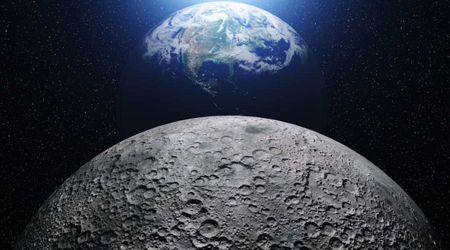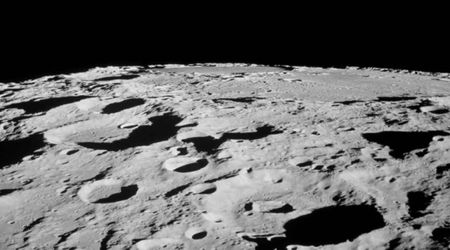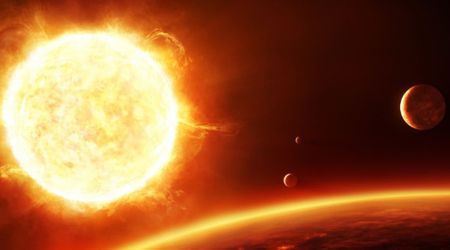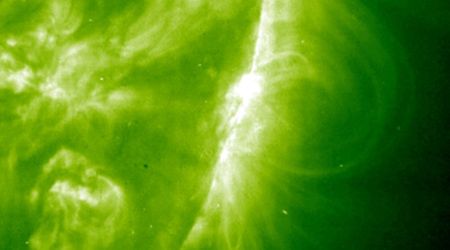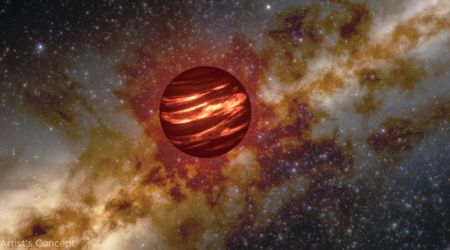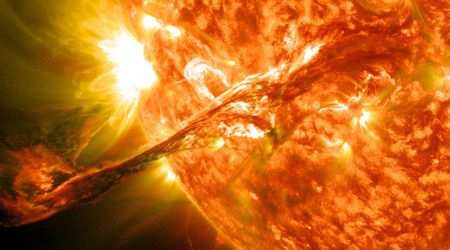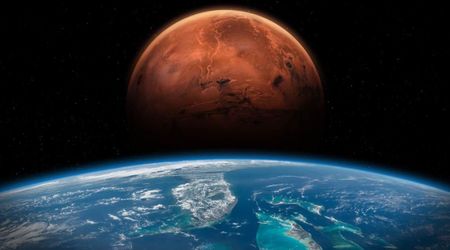What is the farthest planet from the sun?


We live on the planet Earth, the third planet from the Sun in our solar system.
But is Earth “standard” for planets? What is the farthest planet from the Sun and how does it compare to our home?
The dim, cold, windy world named after the Roman god of the sea takes the prize as the farthest planet from the Sun. What’s it like?
The Discovery of Neptune
Neptune is the only planet in our solar system not visible to the naked eye (though you need 20/20 vision and to be looking in exactly the right place to spot Uranus). It was recorded by Galileo as a fixed star during observations with his small telescope in 1612 and 1613.
A couple centuries later, the seventh planet, Uranus, had been discovered, and using mathematical calculations, Urbain Le Verrier predicted that an eighth planet must exist based on the irregularities in Uranus’s orbit.
On September 23rd, 1846 Johann Galle confirmed the planet where Le Verrier predicted with telescopic observations. It was the first planet to be discovered using mathematical calculations.
Based on the suggestion of Le Verrier, the planet was named Neptune after the Roman god of the sea because of its vivid blue color.
Brief Note on the former farthest planet from the Sun
You may have grown up learning that Pluto was the farthest planet from the Sun. Neptune still didn’t account for all the abnormalities in Uranus’s orbit and the hunt for “Planet X” continued.
In 1930, Clyde Tombaugh found “Planet X” in the projected mathematical location using telescopic observation in the form of a tiny object 1/6th the size of Earth and 3.6 billion miles from the Sun. Pluto was weird. It was too small to cause the irregularities observed. Its orbit was highly elliptical and at a severe tilt compared to the orbital plane of the other planets Then, we found hundreds of Pluto-like objects in the Kuiper Belt, an icy asteroid belt past Neptune.
If Pluto was a planet, all these were planets too. This prompted astronomers to re-evaluate what makes a planet based on observations. The new definition detailed that for an astronomical body to be a planet, it had to hit all of the following criteria:
- It had to be spherical
- It had to orbit the Sun (not orbiting another body such as a planet)
- It had to have enough of a gravitational impact that it either pulled everything in or pushed it away, creating a clear path for the orbit
The International Astronomical Union (IAU) re-classified Pluto as a dwarf planet in 2006, along with the other objects in the Kuiper Belt as they do not hit these criteria. Although this has caused controversy, as of today, this ruling stands, making Neptune the final planet in our solar system.

When Pluto was demoted to a dwarf planet, Neptune effectively became the furthest planet from the Sun.
Comparing Neptune to Earth
With a radius of 24,622 kilometers (15,299.4 miles), Neptune is about 4x wider than Earth. If Earth was the size of a large apple, Neptune would be a basketball and it is also similar in size to Uranus.
While Earth takes 24 hours to turn on its axis (1 Earth day), Neptune only takes 16 hours, meaning its day is about a third shorter than ours. While it has a shorter day, it has a much longer year. It takes Earth about 365.25 days to orbit around the Sun once, one Earth year. Neptune takes 60,190 Earth days, or almost 165 Earth years, to orbit around the Sun.
At about 4.5 billion kilometers (2.8 billion miles) from the Sun, it is more than 30 times as far from the Sun as us here on Earth. In fact, it takes light from the Sun almost 249 minutes (about 4 hours) to reach Neptune (versus 8 minutes to reach us). The sunlight we see is about 900 times as bright as the light on Neptune. Noon on Neptune would seem like dim twilight for us.
Neptune’s planetary tilt/ axis of rotation lies at about 28 degrees from its plane of orbit around the Sun, similar to that of Mars and Earth (about 23.5 degrees). This means it experiences seasons as we do, but since its year is so long, each of the four seasons is over 40 Earth years. Being that far away from the Sun also means that Neptune’s average temperature is about -220 Celsius (-364 Fahrenheit), but scientists have observed odd unexplained temperatures over the years, with the South Pole heating up more than expected from 2018-2020, but also unexpected drops in average temperatures in a recent study.
While we have only one moon, Neptune has 14, all of which are named after sea gods and nymphs in Greek mythology, keeping with the sea theme. Neptune’s magnetic field is about 27x more powerful than Earth’, tipped by about 47 degrees from its rotation axis, and experiences wild variations during each rotation. Its gravity is about 110% of ours so if you weigh 100 pounds on Earth, you would weigh 110 pounds on Neptune, if you could actually stand on it.
While Earth is a rocky planet with a solid surface, Neptune (like Uranus) is an ice giant similar to the gas giants Jupiter and Saturn, but so cold that the gases turn icy. It has no solid surface, but is composed of a hot, dense fluid of “icy” water, methane, and ammonia with a small rocky core about the same mass as Earth, making it the densest of the giant planets. Its atmosphere is mostly made up of molecular hydrogen, atomic helium, and methane and extends quite deep, slowly merging into water and melted ices. In fact, data suggests there might be a super hot water (H20) ocean under Neptune’s cold clouds that doesn’t boil away due to the high pressure.
Neptune is a more vivid, brighter blue than its blue-green brother Uranus which also has atmospheric methane so an unknown component causes the difference in color. It is the solar system’s windiest world with winds 3 times stronger than Jupiter's and 9 times stronger than Earth’s which force clouds of frozen methane across the planet at more than 2,000 km per hour (1,200 mph). Our most powerful winds only hit 400 km per hour (250 mph). In 1989, an oval-shaped storm in the southern hemisphere large enough to contain Earth was observed and named the “Great Dark Spot” (in reference to Jupiter’s Great Red Spot storm). It has since dissipated, but new ones have appeared at various locations around the planet.
While you may think of Saturn as the planet with rings, all of the giant planets have rings, including Neptune which has at least 5 main rings. In addition to the rings, scientists have observed 4 clumpy ring arcs of dust and debris in the outermost ring. Scientists hypothesize a nearby moon, Galatea, stabilizes these arcs from spreading out evenly as would be expected.

Neptune is classified as an ice-giant planet for good reasons. It is the fourth largest planet in the solar system.
How long would it take to travel to Neptune from Earth?
At their closest, Neptune is only 4.3 billion kilometers (2.7 billion miles) from Earth, but when the planets are on opposite sides of the sun, it can be up to 4.7 billion km (2.9 billion miles) to Neptune. We will use an average of 4.5 billion km for our calculations.
Starting with more familiar modes of transportation, this is how long it would take to reach Neptune from here on Earth:
- By bicycle (about 23-29 km/h or 14-18 mph): 7,211,538 days/ 19,757 years
- By car/ bus going 100 km per hour (about 62 mph): about 1,875,000 days/ 5,137 years
- By airplane (the fastest commercial aircraft travel at about 575 mph/ 930 km/h): over 201,613 days/ 552 years
In general, it would take about 8–12 years at current space travel speeds depending on the orbit locations of Earth and Neptune, the route chosen to get there, and whether or not human occupants are on board (we generally go slower if humans are on board for safety and comfort).
Numerous corrections to speed and direction are made en route to take advantage of the most efficient route in terms of fuel consumption, distance, and speed. In addition, as spacecraft approach planets, they are sucked in by the planet’s gravitational force, greatly increasing their speed beyond normal propulsion capabilities.
While this can be utilized in gravity assists and can speed up the craft, severe deceleration is needed if you intend to land on or orbit the planet as opposed to crashing into it. This can make calculating average speed and correlating speeds and timelines to other planets difficult to calculate 1:1.
For instance, it took 5 years for Juno to arrive at Jupiter utilizing a gravity assist from Earth and the record-breaking speed of 210,000 km/hr (165,000 mph) during its approach into Jupiter’s orbit, but different gravity assists might be utilized to reach Neptune and that top speed may not be achieved at final approach due to Neptune being less massive than Jupiter.
We often also take advantage of our journey to study planets along the way such as when Cassini made a pit stop at Jupiter before heading on to Saturn. These pit stops often allow the chance for a gravity assist, which can potentially cancel out most of the time used to study this planet before moving on to its final destination.
A commonly quoted speed for Cassini for many years was about 10,000 km/hr. At that speed, it would take 450,000 hours or 18,750 days, or over 51 years. Again, this is not the fastest that Cassini traveled at 44 kilometers per second or 158,400 km per hour or 98,346 miles per hour which would have us arriving at Neptune in less than 4 years. That number is not an accurate long-term velocity for a journey of that length, similar to the record-breaking speed of Juno’s final descent.
We have two missions that give us a more accurate correlation and expected timeline. Voyager 2 took about 12 years to get to Neptune (August 20, 1977, to August 24, 1989) after swinging by Jupiter (and using it for a gravity assist) as well as stops at Saturn and Uranus. Voyager 2 is the only spacecraft that has visited Neptune and it simply took some observations before moving along on its interstellar journey. While it is the only mission to go to Neptune, its path was not direct and utilized technology from 45 years ago.
The New Horizons mission provides our best comparison calculation. It launched at about 58,536 km per hour (36,400 mph) with gravity assist at Jupiter increasing the velocity by 14,000 km per hour (9,000 mph), shortening the trip by 3 years and testing out some of its equipment during the flyby over four months.
It then went into hibernation for about 7.5 years before slowing down for its final approach to Pluto over the course of about 4 months. Launched in January 2006, New Horizons took about 9 and a half years to reach Pluto in July 2015 and could have reached Neptune in about 8 years (about 2,788 days/ 7.6 years without factoring in a 4-month deceleration which then totals approximately 8 years). (Note: Pluto is not an extra 1.5 years of travel from Neptune as this calculation seems to imply.
Pluto’s highly elliptical and tilted orbit means that sometimes it is closer to us than Neptune and the shortest distance between Neptune and Pluto is about 16 Astronomical Units/ 2.4 billion km/ 1.5 billion miles due to their different orbits. NASA utilized these facts in their calculations to find the most efficient route to Pluto, not stopping at Neptune along the way.)

The Near-Infrared Camera (NIRCam) image taken by the JWST shows Neptune's rings in all of their glory. Image Credit: NASA, ESA, CSA, and STScI.
Conclusion
Neptune, the cold, dim, windy ice giant very far away from us is a fascinating world to study in contrast to our own though its great distance from us makes it difficult for direct observation by a probe or other spacecraft. Nonetheless, we have still studied it and will continue to study it as we continue to explore the mysteries of our solar system.

